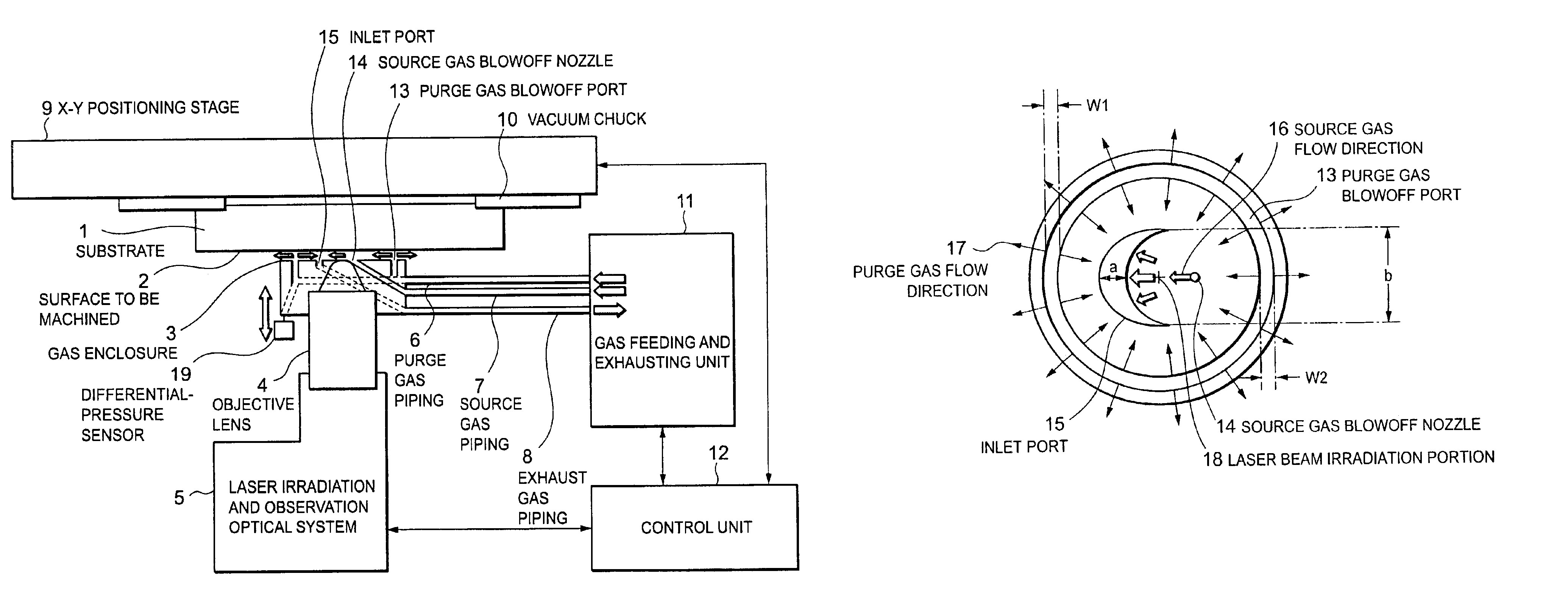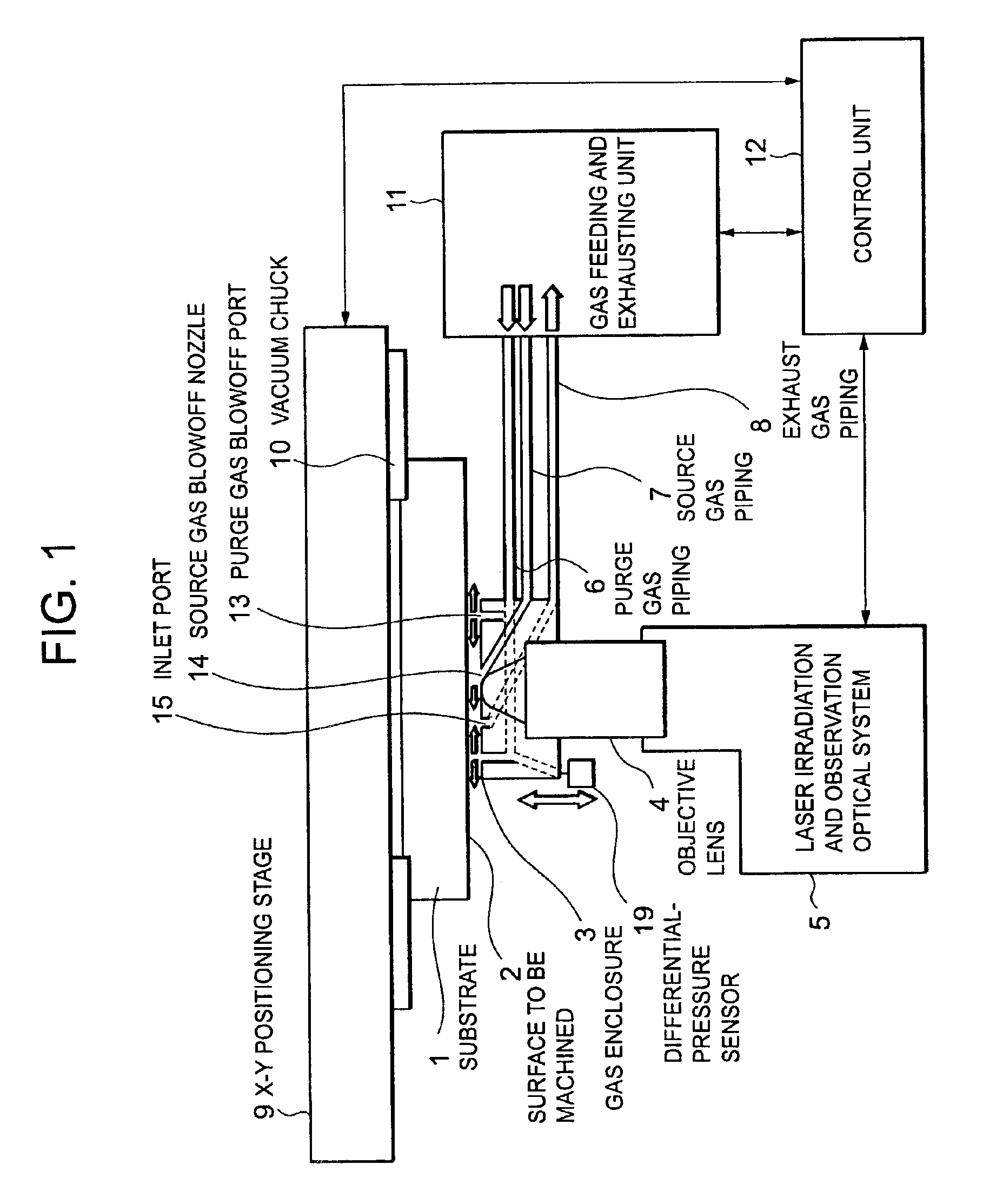Laser machining method and apparatus
a laser beam and machining technology, applied in the direction of photomechanical treatment originals, manufacturing tools, instruments, etc., can solve the problems of etching gas which meets the requirements for pattern correction operations, the edge shape of laser beam-machined parts to be degraded in linearity, and the development pattern width is different from the predetermined width, so as to reduce the cost of introducing the apparatus and maintain the effect of high safety and maintenance cos
- Summary
- Abstract
- Description
- Claims
- Application Information
AI Technical Summary
Benefits of technology
Problems solved by technology
Method used
Image
Examples
first embodiment
[0043]Further, in the invention described above, the descriptions have been done for the cases in which the reaction of laser etching and the reaction of laser CVD are performed individually. The source gas feeding unit is configured so as to feed both a source gas for CVD and a source gas for etching, whereby the methods of machining can be switched by switching between the gases according to the type of defect to be corrected. In this case, since one apparatus allows both machining processes of film-forming and film-removing, this allows the total throughput required for correction to be high speed, providing an advantage of higher practicality.
second embodiment
[0044]Next, as the invention, an apparatus performing film-forming reaction by laser CVD is shown in FIG. 3, wherein the structure of the gas enclosure shown in FIG. 2 is used and the surface to be machined of the substrate is directed upward and thus irradiated with a laser beam from above. In this case, since the substrate has the surface to be machined directed upward, there is an advantage that the substrate can be easily held on the X-Y positioning stage. Further, even if the velocity of flow of source gas is made higher at the laser irradiation portion as compared to the conventional gas enclosure provided with dual concentric openings for suction and blowoff, of purge gas, the leakage of the source gas into the surroundings does not occur. Therefore, higher velocity of flow of the source gas can suppress the adherence of fine particles depositing on the surrounding area of the CVD film, improving the quality of correction.
[0045]Further, in this structure, by introducing laser...
PUM
| Property | Measurement | Unit |
|---|---|---|
| Width | aaaaa | aaaaa |
Abstract
Description
Claims
Application Information
 Login to View More
Login to View More - R&D
- Intellectual Property
- Life Sciences
- Materials
- Tech Scout
- Unparalleled Data Quality
- Higher Quality Content
- 60% Fewer Hallucinations
Browse by: Latest US Patents, China's latest patents, Technical Efficacy Thesaurus, Application Domain, Technology Topic, Popular Technical Reports.
© 2025 PatSnap. All rights reserved.Legal|Privacy policy|Modern Slavery Act Transparency Statement|Sitemap|About US| Contact US: help@patsnap.com



